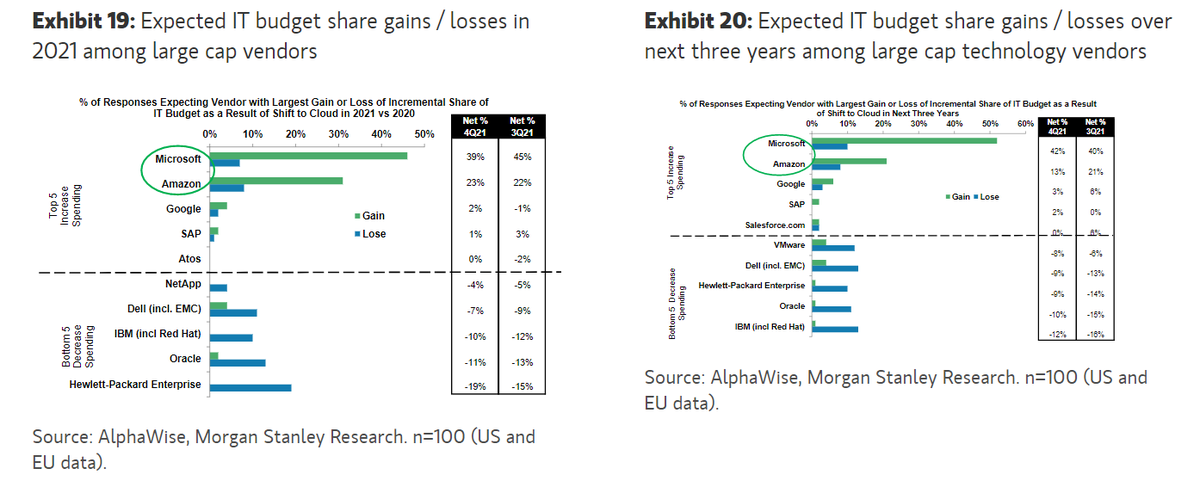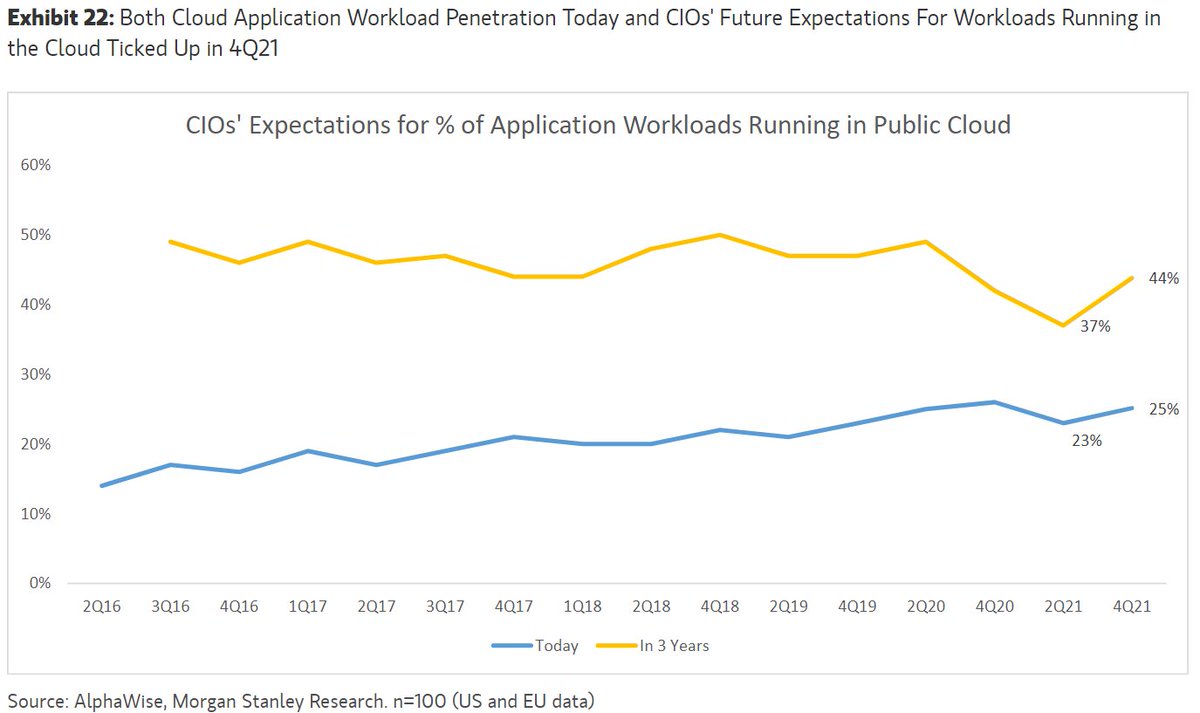Some takeaways from Morgan Stanley's Q4 CIO survey
- Software has the highest growth expectations in IT
- Strong demand in software persisting (not simply pull forward in 2021)
- Cloud computing remains CIO's top priorities
- Security software most defensible
More graphs below
- Software has the highest growth expectations in IT
- Strong demand in software persisting (not simply pull forward in 2021)
- Cloud computing remains CIO's top priorities
- Security software most defensible
More graphs below
"Survey data suggests 25% of application workloads are running in the public cloud today, up from 23%... in 2Q21. The multi-year trend in the migration of applications to the cloud remains intact, with CIOs expecting 44% of workloads to reside in public cloud by 2024" 

"As workloads continue to shift from on-premise to the cloud, Microsoft and Amazon remain the largest beneficiaries , both in 2021, as well as over the next three years" 

"Snowflake screens as the vendor with the highest weighted average growth expectations in 2022 at +7.1%...30% of CIOs surveyed expecting spend to increase in 2022, vs. 0% of CIOs expecting spend to decrease."
Microsoft has the highest up-to-down ratio of 70%
Microsoft has the highest up-to-down ratio of 70%

Maybe most importantly:
"Expectations for software spending growth in 2022 remain ahead of historical levels, refuting the notion of a pull forward in demand in CY21"
"Expectations for software spending growth in 2022 remain ahead of historical levels, refuting the notion of a pull forward in demand in CY21"
• • •
Missing some Tweet in this thread? You can try to
force a refresh







